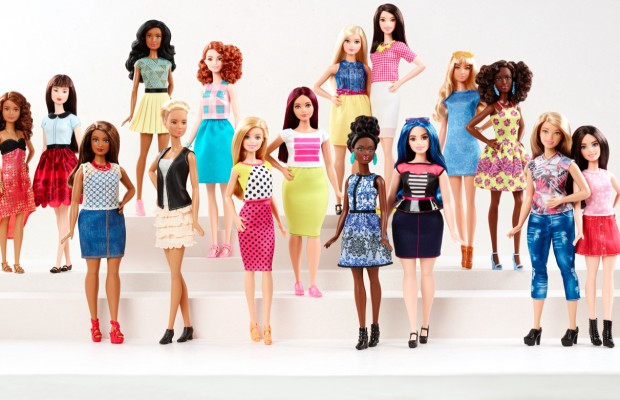New Barbie becomes a role model for all
By Caitlin Henderson and Nina Chiuchiarelli on February 24, 2016- Tweet
-
- Pin It

Ever since its debut in the 50s, Barbie has been one of the most popular toys among children, becoming a role model and being criticized for her unrealistic body proportions. This year, Mattel, the company that manufactures Barbie, introduced new body types, facial features, and races for the dolls.
The original Barbie had a skinny waist, blonde hair and blue eyes: the stereotypical “perfect” person. While the dolls have had a positive contribution with regards to the fun they brought, this idea of the perfect girl has also been detrimental to many.
The Barbie created a standard of what girls should look like to be considered beautiful, a standard that was physically unreachable and in fact anatomically impossible. In the 60s, “Slumber Party Barbie” was released, which included a diet book that instructed girls to lose weight by not eating.
For Emily Taketa, junior, the dolls impacted her opinion of what is considered beautiful. “All the barbies were white and she had the iconic blonde hair and blue eyes,” Taketa said, “Growing up as a minority in my community, I was always aware of how I did not look like the other girls.”
With its new direction, Mattel strives to “let girls know it doesn’t matter what shape you come in.” The company is releasing Barbie dolls in seven skin tones and four different body types, as well as 24 hairstyles and 33 haircolors.
Nigerian medical student Haneefa Adam also created a Barbie donning a Muslim hijab, which earned it the nickname, “Hijarbie.” The doll appeared all over Instagram, and brought Adam to an interview with CNN. According to Adam, Hijarbie has “roots in (her) religion and cultural identity,” which will also give Muslim girls a doll modeled after themselves.
“I think it’s really cool that they’re doing different nationalities and religions, and that it’s expanding a bit more, so people can kind of see how people dress,” Faatimah Syed, junior, who regularly wears a hijab, said. “On Instagram, you don’t really see a lot of dolls or Barbies with hijab outfits; they’re usually shorter outfits. I think it’s really cool that someone took the time to dress up a Barbie in a hijab outfit.”
The release of these new barbies brings hope for more praise of diversity in the future, as kids learn to accept and see the beauty in other cultures at a young age.
“The dolls seem to represent a greater social trend to acknowledge and accept diversity. I think it much more likely that a young child can see herself/himself in one of these dolls than in the standard version that only depicts one concept/image of women,” Anna Karas, a local psychologist, said.
Barbie.com/press release
Twitter
-
The Latest
-
April 14, 2025
Without Diversity, Equity and Inclusion initiatives, we as a country are moving backwards
-
April 14, 2025
Volunteer from the heart, not from ambition
-
April 14, 2025
Forgiveness opens opportunity for freedom
-
April 14, 2025
University federal funding cuts halt development
-
April 14, 2025
The fear of rejection creates inaction
-
April 14, 2025
Scandinavian Festival celebrates 51 years of culture
-
April 14, 2025
Aggressive coaches create quitters; kind coaches create winners
-
April 14, 2025
NPHS’ track and field athletes race against themselves
-
April 14, 2025
“A Minecraft Movie” flint and stole my sweet and precious time
-
April 14, 2025
Boys’ lacrosse cradles new experiences for athletes
-
April 14, 2025
The Panther Prowler
The Panther Prowler is the official publication of Newbury Park High School, created and produced by Advanced Journalism students. The Panther Prowler is published every three weeks throughout the school year. Guest letters to the editor are welcome but must be signed.Twitter
Instagram
Copyright © 2014 Panther Prowler.
